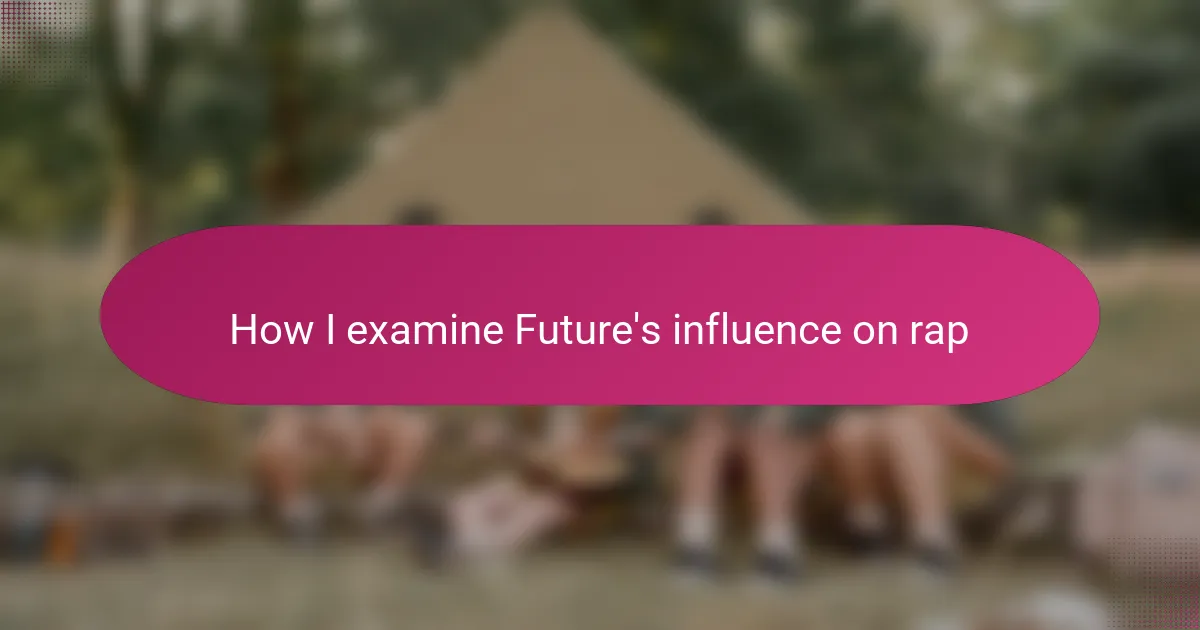Key takeaways
- Rap genres, from gangsta to trap, offer a diverse emotional landscape that affects how listeners connect with the music.
- Future’s blend of melody and raw emotion has reshaped rap, encouraging artists to explore vulnerability and atmospheric sounds.
- His production techniques emphasize space and mood, allowing for a unique listening experience that merges rapping and singing.
- Future’s influence has empowered emerging artists to express complexity in their music, making emotional openness a hallmark of modern rap.
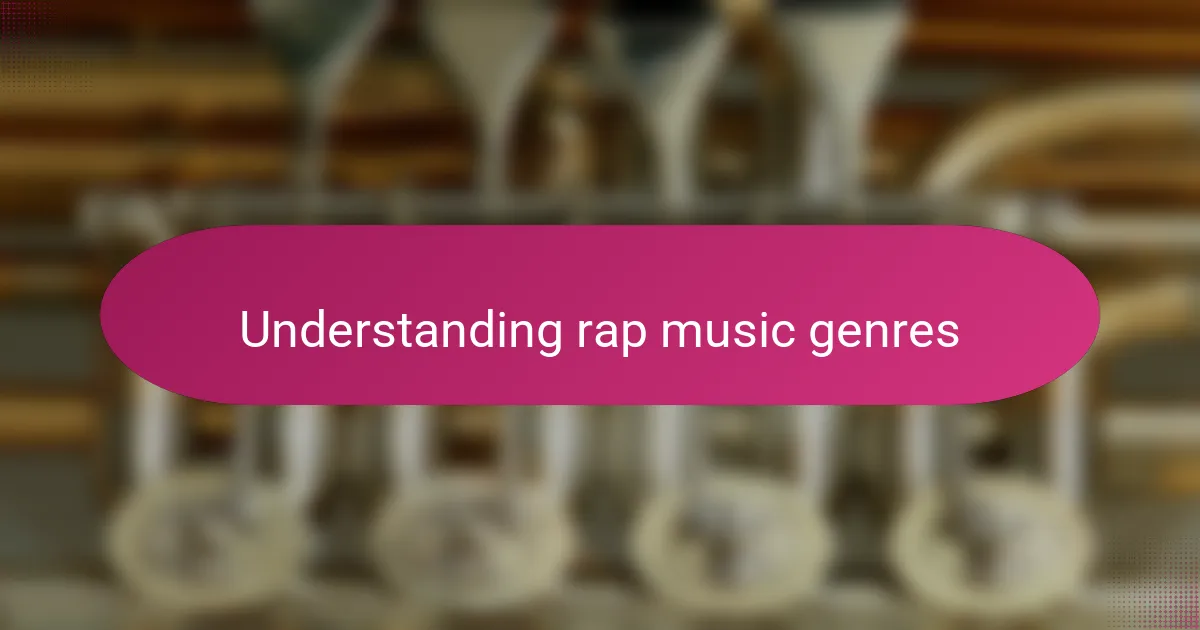
Understanding rap music genres
When I first dove into rap, I realized how diverse the genres within it truly are. From the gritty storytelling of gangsta rap to the melodic flows of trap, each style carries its own distinct vibe and cultural background. Have you ever noticed how the beat can completely change the mood of a track, guiding your emotions without you even realizing it?
Understanding these genres isn’t just about labels; it’s about feeling the different energies they bring. For example, trap’s heavy use of hi-hats and rolling bass lines creates a sense of urgency that contrasts sharply with the smooth, relaxed rhythms of lo-fi hip-hop. These nuances shape how artists express themselves and how listeners connect to the music on a personal level.
I often find that knowing the roots of a rap subgenre adds depth to listening. It’s like meeting a new person and learning their story—it changes how you perceive every word and beat. What genre speaks to you the most, and why do you think that is?
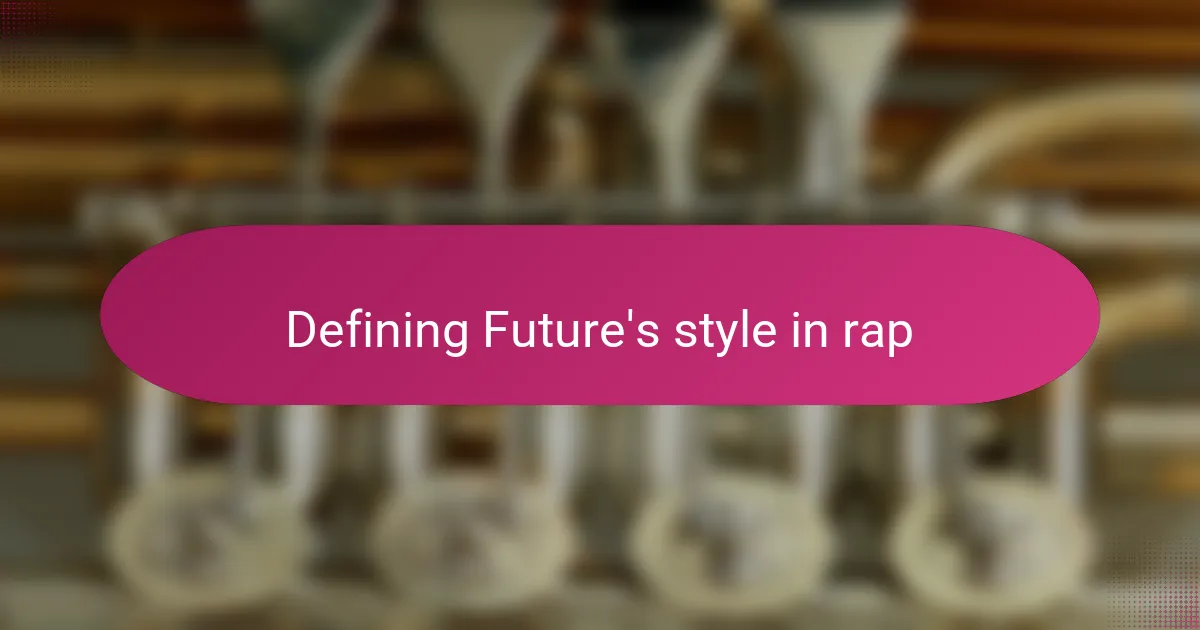
Defining Future’s style in rap
When I think about Future’s style in rap, what stands out most is his unique blend of melody and rhythm. He doesn’t just rap; he sings with auto-tuned emotion, turning his voice into another instrument that carries the mood of his tracks. Have you ever caught yourself humming along because the melody sticks with you long after the song ends?
What fascinates me is how Future builds his sound around vulnerability, something not often spoken about in traditional rap. His lyrics often dive into struggles with relationships, fame, and self-reflection, but he wraps it in a hypnotic, almost trance-like production. This combination creates a vibe that feels both raw and futuristic, which is why I believe he’s a true innovator in rap.
From my experience listening closely, Future’s rhythm choices—those stuttering hi-hats and deep bass—give a sense of movement that pulls you into his world. It makes me wonder: can rap evolve into something more emotional and melodic without losing its edge? Future has made me think the answer is yes.
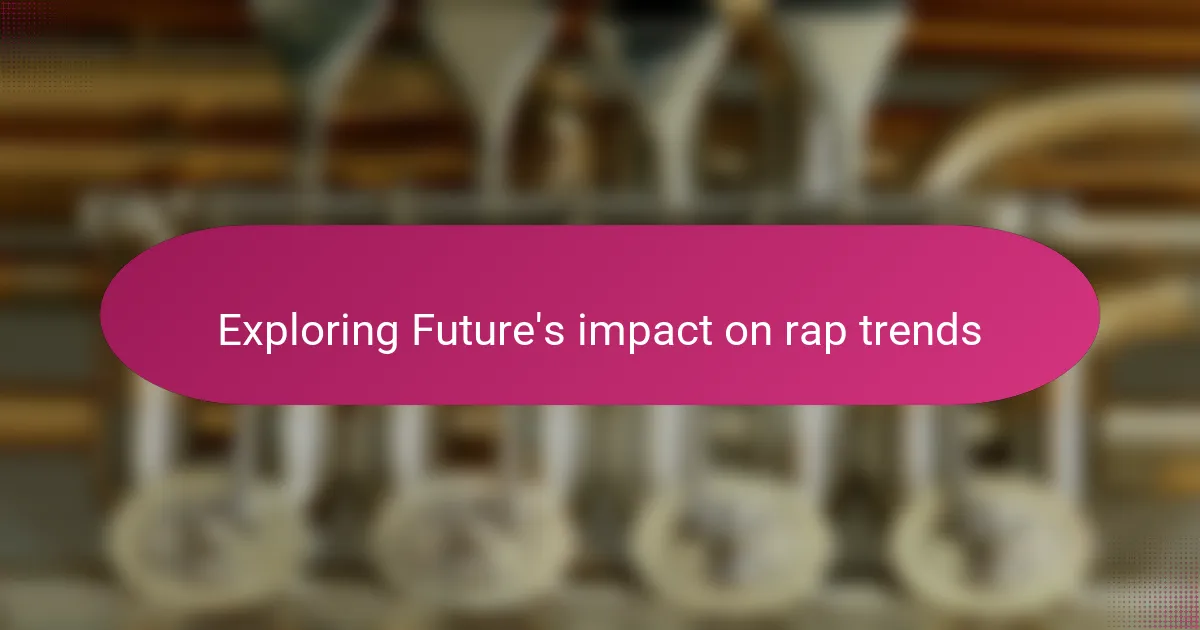
Exploring Future’s impact on rap trends
Future’s influence on rap trends is hard to overstate. I remember noticing how, after his rise, the line between rapping and singing started to blur more than ever before. It felt like he introduced a new language in rap—one where emotions and melody became front and center, changing how artists express vulnerability.
What’s really interesting is how Future’s style pushed producers and rappers to experiment with atmospheric sounds and slower tempos. I found myself intrigued by tracks that didn’t just focus on lyrical skill but also on creating a mood, almost like a sonic experience you could get lost in. Have you ever caught yourself zoning out to a track, letting the vibe carry you? That’s the kind of trend Future helped spark.
From my perspective, Future’s impact goes beyond just music—it shifted the culture around rap. His willingness to expose flaws and personal struggles opened a door for others to do the same. I often wonder if this emotional rawness has made rap feel more relatable to a wider audience. Has it changed the way you connect to rap music too?
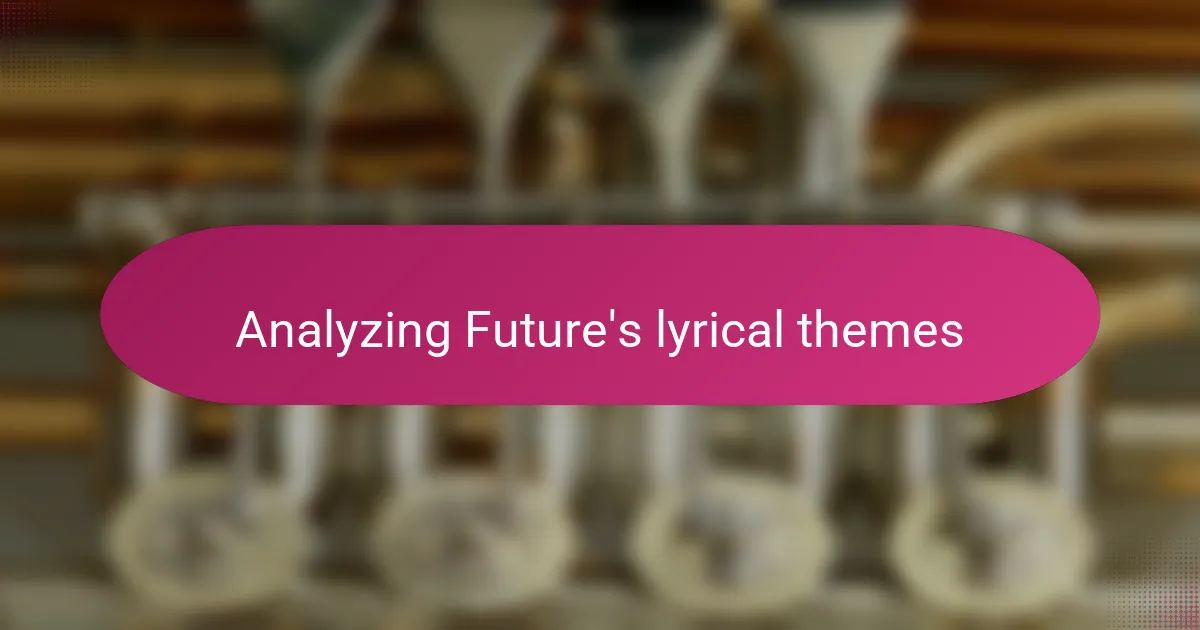
Analyzing Future’s lyrical themes
When I listen closely to Future’s lyrics, what strikes me is the blend of bravado and vulnerability he weaves throughout his songs. He talks openly about struggles with love, trust, and pain, yet he does so with a tone that feels almost hypnotic. Have you noticed how his words often carry a bittersweet edge, combining celebration with a sense of loneliness?
Another thing I find fascinating is how Future’s lyrics explore the highs and lows of fame without sounding cliché. Instead of just boasting, he reflects on the emotional cost behind the lifestyle—the isolation, the pressure, and sometimes the numbness. It’s this honest portrayal that makes his music resonate beyond the typical rap bravado.
From my experience, Future’s approach to themes like dependency and heartache isn’t just storytelling; it feels like a candid conversation. It’s as if he’s inviting listeners into his inner world, flaws and all. Does that vulnerability make you connect with his music on a deeper level too? I know it does for me.
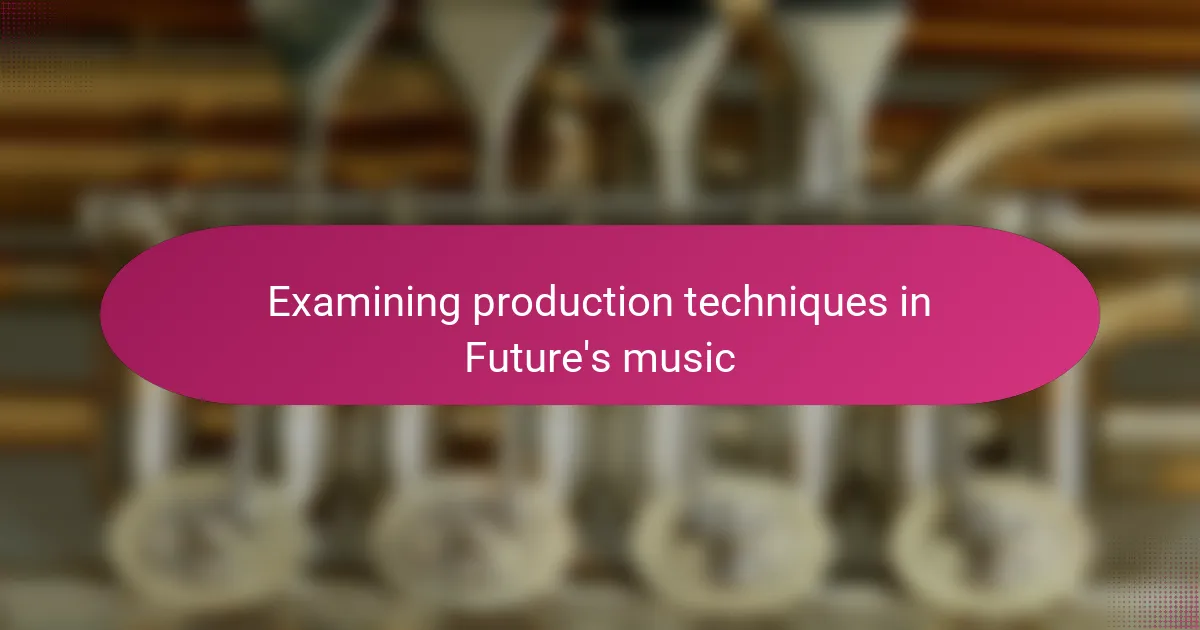
Examining production techniques in Future’s music
When I dig into Future’s production techniques, the first thing that hits me is his masterful use of space in beats. He knows exactly when to pull back the layers, letting his vocals breathe and resonate. It’s almost like he’s painting with sound—each element placed thoughtfully to enhance the emotional weight of the track.
I’ve noticed his signature use of ethereal synths and deep, rolling bass that create this otherworldly atmosphere. It’s not just about the rhythm; it’s about crafting a mood that feels both melancholic and hypnotic. Have you ever heard a beat that made you feel simultaneously detached and completely immersed? Future’s production often pulls off that paradox.
What really fascinates me is how Future collaborates with his producers to fuse traditional trap elements with innovative sound design. Those stuttering hi-hats combined with airy pads and subtle vocal effects give his music a futuristic edge without losing the rawness of rap. From my experience, this balance is what keeps his sound fresh and influential year after year.
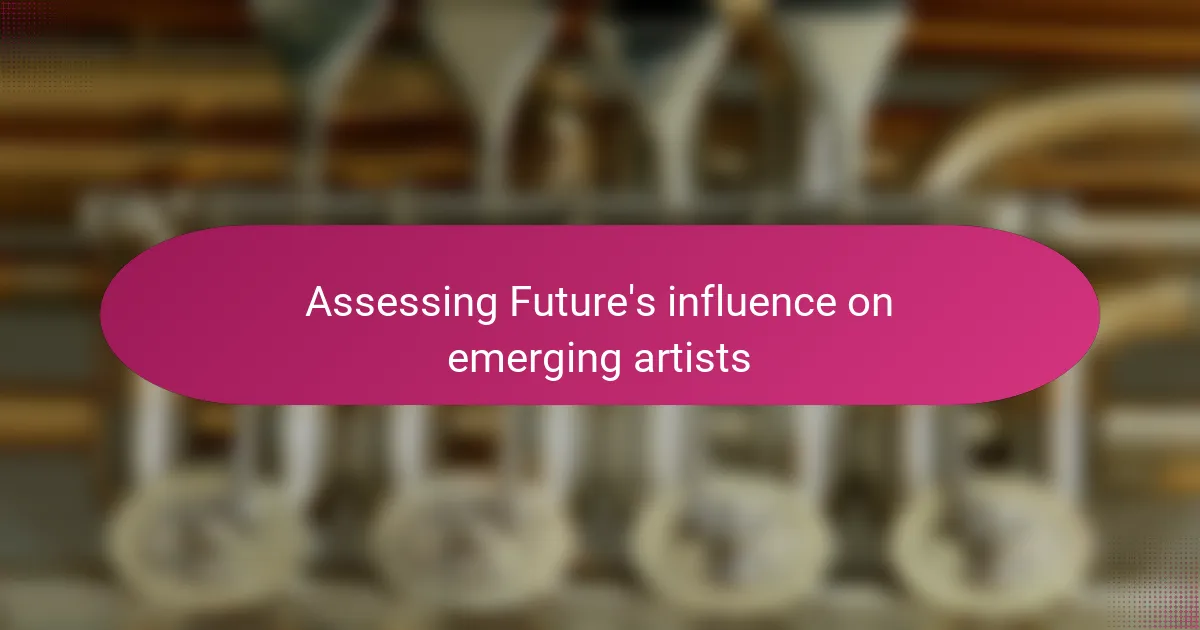
Assessing Future’s influence on emerging artists
Emerging artists today seem almost inseparable from Future’s shadow, and I’ve noticed how many use his blend of melody and raw emotion as a springboard for their own sound. It’s like Future unlocked a new emotional vocabulary in rap that young rappers eagerly adopt, shaping their identities around vulnerability and mood. Have you ever caught yourself hearing a new artist and instantly thinking, “That’s got a Future vibe”?
What strikes me is how some rising talents don’t just mimic Future, but rather build on his foundation—adding their own twists while keeping that hypnotic, melodic flow. It reminds me of watching a student who’s studied a master carefully but then adds their own brushstrokes to the canvas. This shows me Future isn’t just influencing, he’s inspiring innovation within the next wave of rap.
From my experience, the true mark of Future’s impact is how emerging artists feel freer to express complexity in their music. They’re less afraid to expose struggles and emotions because Future proved it could resonate widely. Isn’t it powerful to think how one artist’s openness can reshape an entire generation’s voice?
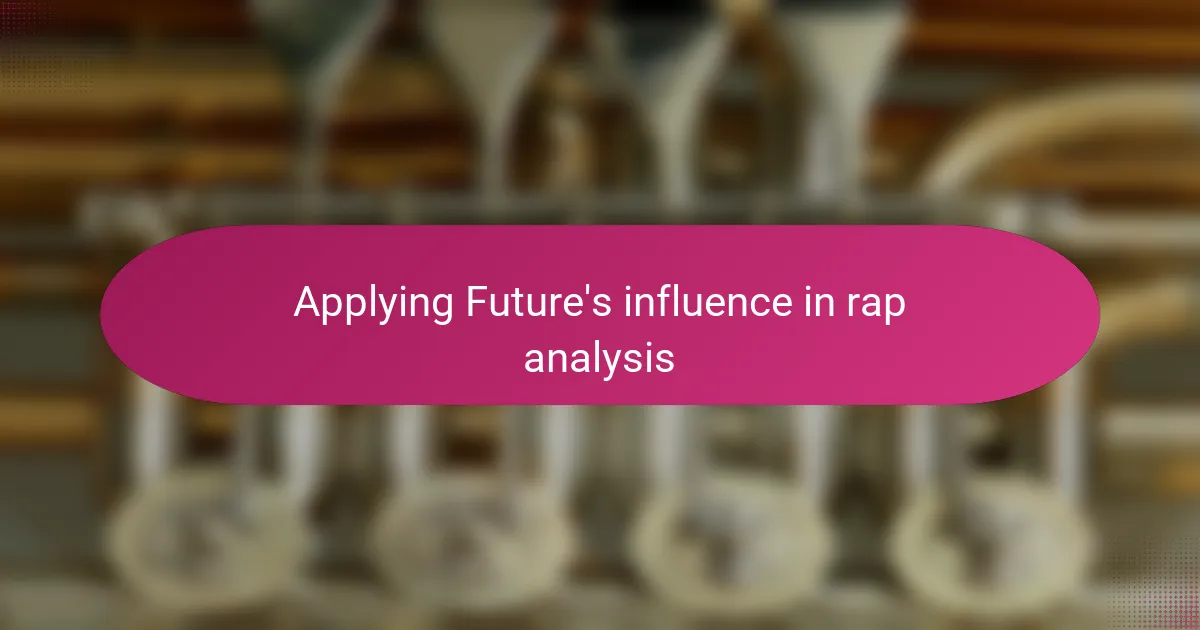
Applying Future’s influence in rap analysis
When I apply Future’s influence in rap analysis, I focus heavily on the emotional texture he brings to his tracks. It’s not just about dissecting lyrics or beats separately; it’s about understanding how vulnerability and melody intersect to create a mood that feels immersive. Have you ever listened to a song where the feeling hits before you even catch every word? That’s the effect Future consistently delivers, and it’s a crucial lens for me when analyzing contemporary rap.
I also find it essential to look at how Future’s use of production techniques—like those spacious beats and ethereal synth layers—amplify the emotional storytelling. In my experience, this sonic environment sets the stage for his lyrical themes, making the listener feel as though they’re inside the artist’s mind. When I break down a track, I ask myself: how does the beat’s atmosphere support or contrast the message? With Future, that balance often reveals layers of meaning you might miss at first listen.
Lastly, analyzing rap through Future’s influence means paying attention to the fluid blend of rapping and singing. I remember the first time I noticed this crossover—it changed the way I thought about vocal delivery in hip-hop. Instead of seeing rapping and singing as separate skills, I now treat them as parts of a cohesive whole that drives storytelling. Don’t you think this shift opens up more creative possibilities for artists and helps the listener connect on a deeper emotional level? For me, that’s where Future’s impact feels most profound.
